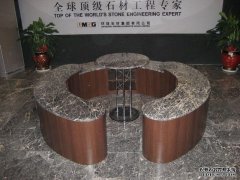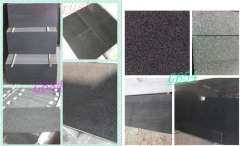Making the New Look Just Like Old
When Duke University decided to design and build a 45,000 square foot addition to its acclaimed Duke Divinity School, the challenge was staggering: Create a structure that seamlessly completed the cloister that is formed by the Duke Chapel, built in 1926 and the “New Divinity,” wing, erected in 1970, and the open loggia linking it to the original Divinity building. As Dr. Jones indicated, “The design and construction team succeeded, a fact that was reinforced when the bianco carrara Marble Institute of America presented Rugo Stone, LLC, of Lorton, Virginia, the project stone fabricator and installer, with an Award of Merit in its prestigious Pinnacle Awards competition.”
The Duke Divinity School addition reflects an age of skilled stone carvers of native materials. The design of the addition takes advantage of a sloped site with three terraced floors. The upper and middle levels of the addition align with the first and basement floors of the Old and New Divinity buildings, with ramps and stairs roviding the connection. Months before installation, stone masons from Rugo Stone worked in Duke’s own Hillsborough quarry preparing thousands of linear feet of precise, right angle building corners required by the design’s complex geometry. In all, over one thousand tons of Duke stone was delivered for installation of nearly 15,000 square feet of cladding. However, the most intriguing aspect of this historically accurate architectural gem is all in smooth finished Indiana Limestone: twelve delicate arches, decorative bands, carved wall copings, and, of course, the twelve historically accurate ornamental finials. These were created by master carvers in the same Rustic Buff Indiana Limestone as the original buildings. Forty-eight truckloads were required for the 380 tons that were quarried and processed into 2,100 flawlessly installed individual pieces.
Each finial lonenecessitated 280 hours of shop labor toreplicate plaster models which themselves were created from castings of in-place finials existing on campus. In addition to many Indiana Limestone window surround elements and arch trim, another interesting historical twist was added by Rugo Stone for interior applications of stone. Originally specified in a domestic slate, approximately 4,000 square-feet of stone, flooring steps and sills and 1,100 linear feet of base were supplied and installed by Rugo’s masons with traditional Pietra Serena stone from Italy. This material is the traditional building stone of Florence and historical texts state that the great artist Michelangelo himself toiled in his youth as a quarry worker in the Pietra Serena quarries. In addition to Rugo Stone, other key team members included Hartman-Cox Architects, Skansa USA, general contractor, and Bybee Stone Company, Indiana Limestone supplier and fabricator.
Monthly Recommendation
Recommended News







